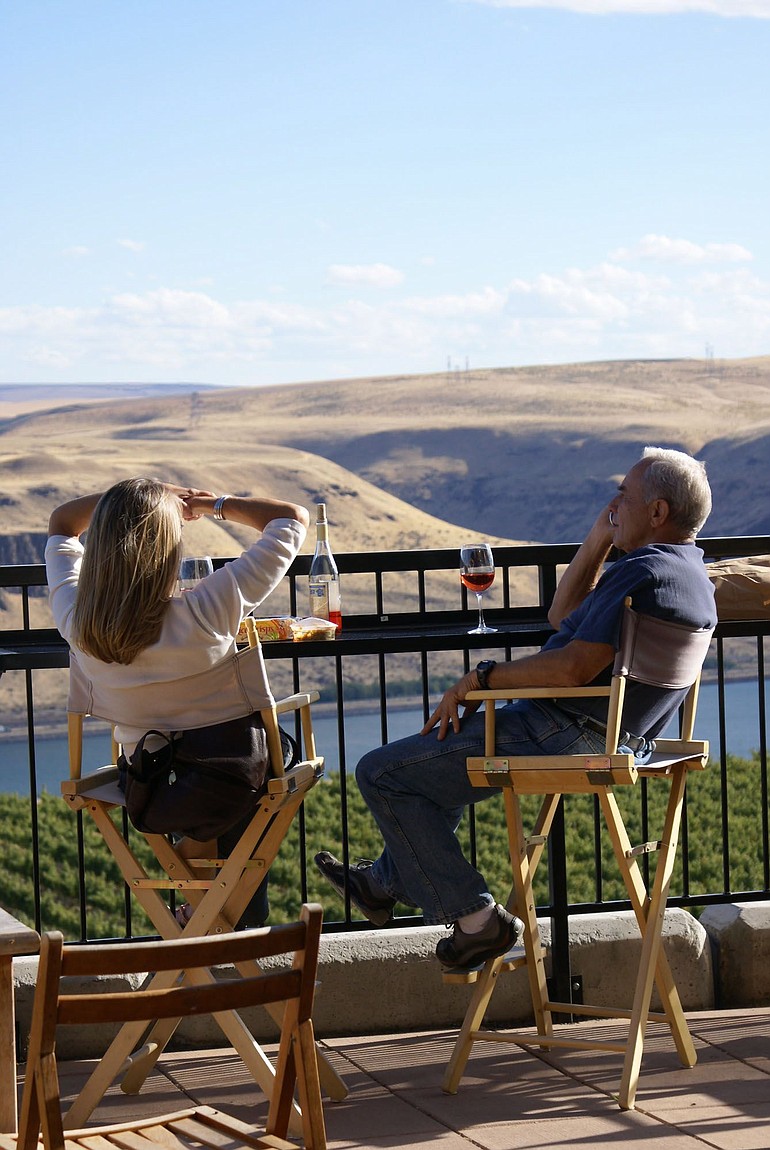Living in Clark County means having access to a world-renowned playground that’s an easy day’s drive from home.
The Columbia River Gorge National Scenic Area, established in 1986 to protect the scenic vistas and preserve the dramatic natural and cultural features of the river gorge that divides Washington and Oregon, celebrates its 25th anniversary this year.
The scenic area spans 83 miles in two states and six counties, extending from the wet, green forests west of the Cascade Crest to the arid, open grasslands on the east side. It offers a dizzying array of recreation opportunities, from windsurfing and sailboarding to hiking and mountain biking to museum and winery tours and strolls through picturesque towns, with an infinite number of photo ops.
It’s an open-air natural history classroom, with rare wildflowers and dramatic geological formations. Deep within Bonneville Dam, visitors can witness the annual migration of salmon and steelhead through a viewing window as biologists conduct fish counts to determine the size of the runs.
The Columbia River offers a chance to fish for giant sturgeon and spring and fall chinook salmon. The Little White Salmon River, a tributary of the Columbia on the Washington side, beckons kayakers with legendary white-water rapids and falls.
The Lewis and Clark Expedition traveled this way in 1804 and returned in 1806. History buffs can read the expedition journals and imagine what the Gorge was like before the river was dammed, the marshes drained and developed, and the forests logged. To protect scenic vistas, rural development in the Gorge is restricted by the National Scenic Area Act; most economic development is limited to the scenic area’s 13 cities and towns.
The Oregon side of the Gorge, which is mostly publicly owned, is laced with waterfalls that cascade from the rim, including Multnomah Falls, at 620 feet, the second-highest year-round waterfall in the country. The Washington side features stark escarpments carved by ancient ice age floods.
The Gorge itself is a major tourist attraction, with panoramic views from Cape Horn east of Washougal and Crown Point east of Corbett, Ore. Mount Hood and Mount Adams are visible from many viewpoints.
Hiking trails abound, from the easy walk that leads to lower Multnomah Falls to the steep path that ascends Dog Mountain. One of the Gorge’s most popular routes for hikers and cyclists is Oregon’s Historic Columbia River Highway State Trail. It follows the route of the original U.S. Highway 30, the first highway through the Gorge. The trail is open between Hood River, Ore., and Mosier, Ore., and between Cascade Locks and Bonneville Dam. Windsurfers from around the world converge on Hood River to enjoy its world-class gusts.
Guided walks at Columbia Hills State Park east of Dallesport allow visitors to view prehistoric pictographs and petroglyphs carved by Columbia Basin tribes, including the famous specimen of rock art known as “She Who Watches.”
Nearby, the Dalles Mountain Ranch, now part of the same state park, preserves a sprawling working ranch that presents panoramic vistas to the south and east.
Artifacts both prehistoric and post-settlement are on display at the Columbia Gorge Interpretive Center in Stevenson and the Columbia Gorge Discovery Center in The Dalles, Ore.
About 100 miles east of Vancouver, the Maryhill Museum of Art offers an eclectic collection, including Rodin sculptures, American Indian baskets and beadwork and memorabilia from Queen Marie of Romania. The museum and the nearby Stonehenge replica are the legacy of Samuel Hill, the entrepreneur who promoted road-building projects throughout the Northwest.
Beyond the scenic area’s eastern boundary, travelers can take in the vast new wind farms that dot the Columbia Hills of eastern Klickitat County and northeast Oregon’s Columbia Plateau.
In recent years, the Gorge has become a magnet for more gentrified forms of recreation. City dwellers can take self-guided tours of wineries and vineyards in Klickitat County. Chic hotels and bed-and-breakfasts offer scenic backdrops for weddings and special events, complete with fine dining.



